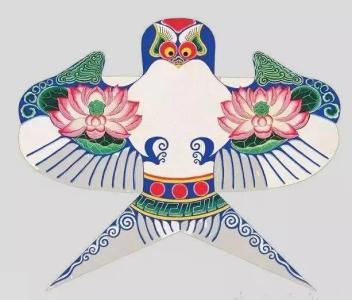Chinese Kites 風箏
Dublin Core
Title
Chinese Kites 風箏
Subject
Entertainment, Folk art, Decoration
Description
These kites are delicately made of paper and bamboo have numerous shapes such as swallow, centipede, butterfly etc. Regarded as an artistic marvel, the kite makers' skills in both painting and in the design of the kites' flexible flying movement are well renowned.
Creator
Mozi, Lu Ban
Date
Zhou Dynasty (1046 BC – 256 BC)
Format
Flat, Colourful
Type
Craft
Crafts Item Type Metadata
Crafting Methods
Kite construction consists of three parts: framing, gluing and decoration. With framing, light woods such as bamboo were often used to create the bones of the kite. These are both light, exceptionally strong, and pliable. Many frame shapes were popular, including traditional representations of birds, butterflies and dragonflies, as well as non-winged insects such as centipedes or mythical animals like dragons.
Materials
Cloth, Paper, Wood / Bamboo
Usage and Application
Kites were originally used for military intelligence but now are used as toys.
Mainly, they were used for military purposes. The first kites were what we today would call prototype kites: they were made of light wood and cloth. They were designed to mimic a bird's natural flight. The first Chinese kites were used for measuring distances, which was useful information for moving large armies across difficult terrain. They were also used to calculate and record wind readings and provided a unique form of communication similar to ship flags at sea.
Mainly, they were used for military purposes. The first kites were what we today would call prototype kites: they were made of light wood and cloth. They were designed to mimic a bird's natural flight. The first Chinese kites were used for measuring distances, which was useful information for moving large armies across difficult terrain. They were also used to calculate and record wind readings and provided a unique form of communication similar to ship flags at sea.
Interesting Facts
It was in the city of Weifang that Marco Polo, in 1282, supposedly witnessed the flying of a manned kite.
According to Marco Polo's travel diary, there existed a tradition in Weihai at the time for testing the wind with a kite in order to determine if an imminent voyage would be good or not. This was done by binding a sailor to a large kite to a ship as it "rode with the wind", then casting kite and sailor off the ship into the breeze. If the kite and its passenger flew high and straight, it was a sign that the voyage would be a good one.
When he returned to Italy, Marco Polo brought with him a Chinese kite, and soon, thanks to the Silk Road, the Chinese kite became known throughout Europe, and from Europe, it would of course travel to the New World, the Americas.
According to Marco Polo's travel diary, there existed a tradition in Weihai at the time for testing the wind with a kite in order to determine if an imminent voyage would be good or not. This was done by binding a sailor to a large kite to a ship as it "rode with the wind", then casting kite and sailor off the ship into the breeze. If the kite and its passenger flew high and straight, it was a sign that the voyage would be a good one.
When he returned to Italy, Marco Polo brought with him a Chinese kite, and soon, thanks to the Silk Road, the Chinese kite became known throughout Europe, and from Europe, it would of course travel to the New World, the Americas.
Collection
Citation
Mozi, Lu Ban, “Chinese Kites 風箏,” CCCH9051 Group 64, accessed January 22, 2026, https://learning.hku.hk/ccch9051/group-64/items/show/8.

